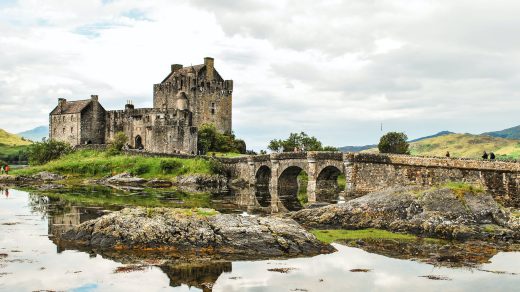Stone Circles
 |
The great ceremonial stone circles are the most enigmatic of all the Neolithic farmers’ creations. They were built between 3000 – 2000 BC by a wide variety of Neolithic communities. Today only the stones remain, but in their time they were part of a wider landscape of ritual sites built of timber and stone, and set in prominent positions in the heart of vibrant farming communities.
Those communities seem to have had a shared interest in the movements of the sun and moon, which may have had a religious significance to them, but used their stone circles in differing ways across time.
How were they built?
The stone circles were built with locally available stone, quarried from natural rock outcrops like the Orkney flagstones. Natural cracks in the outcrops were exploited and wooden wedges used to split the stones. It needed complex and ordered societies to move the stones to the site of the circles. A five-metre-long stone weighs about five metric tons, requiring about a hundred people to move it or less if they used ropes, levers, rollers and ramps to move it into position.
Why were they built?
It’s possible the stones were erected to commemorate the dead or to highlight the prestige of the organiser. Whatever they were for, they show a commitment to long-term planning. It would have taken a great deal of time and effort to construct these monuments and may have taken several generations to complete them.
A circle, built of timber or stone, sometimes with surrounding earthwork ditches, seems to involve ideas on defining special, ritual spaces and of excluding some people from the ceremonies within.
How do they differ?
The earliest of stone circles date to around 3,000 BC: like the Stones of Stenness on Orkney, where twelve stones were built inside a massive earthwork, probably by the same people who built the nearby tomb at Maes Howe. The tomb’s passageway points towards the rising midwinter sun, showing these people had a religious interest in the sun’s movements, but that is not reflected in the stones themselves, which have no significant alignment.
Later stone circles, like at Callanish on Lewis (2,900-2,600 BC), do have significant alignments. Set in a landscape of Neolithic fields and houses, its central ring of stones is built around a small chambered cairn and has four avenues of standing stones leading off roughly to the points of the compass. The northern avenue points to a burial cairn, and from the southern avenue the moon can be seen to skim along the top of the hills every 18.6 years. A thousand years later a similar interest in the heavens can be found at Balnuaran of Clava near Inverness (2,000-1,700 BC), where a chambered cairn enclosed in the stone circle is orientated to the mid-winter sun.The Aberdeenshire stone circles, such as Easter Aquhorithies, have a massive horizontal stone between two vertical stones which dramatise the setting of the moon and sun. Archaeologists have discovered that the cremated remains of the dead were placed within the circle. All these stone circles reveal the diversity of uses and the differing interests of the communities who built them.



